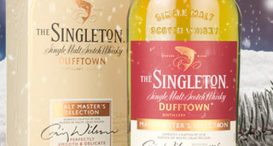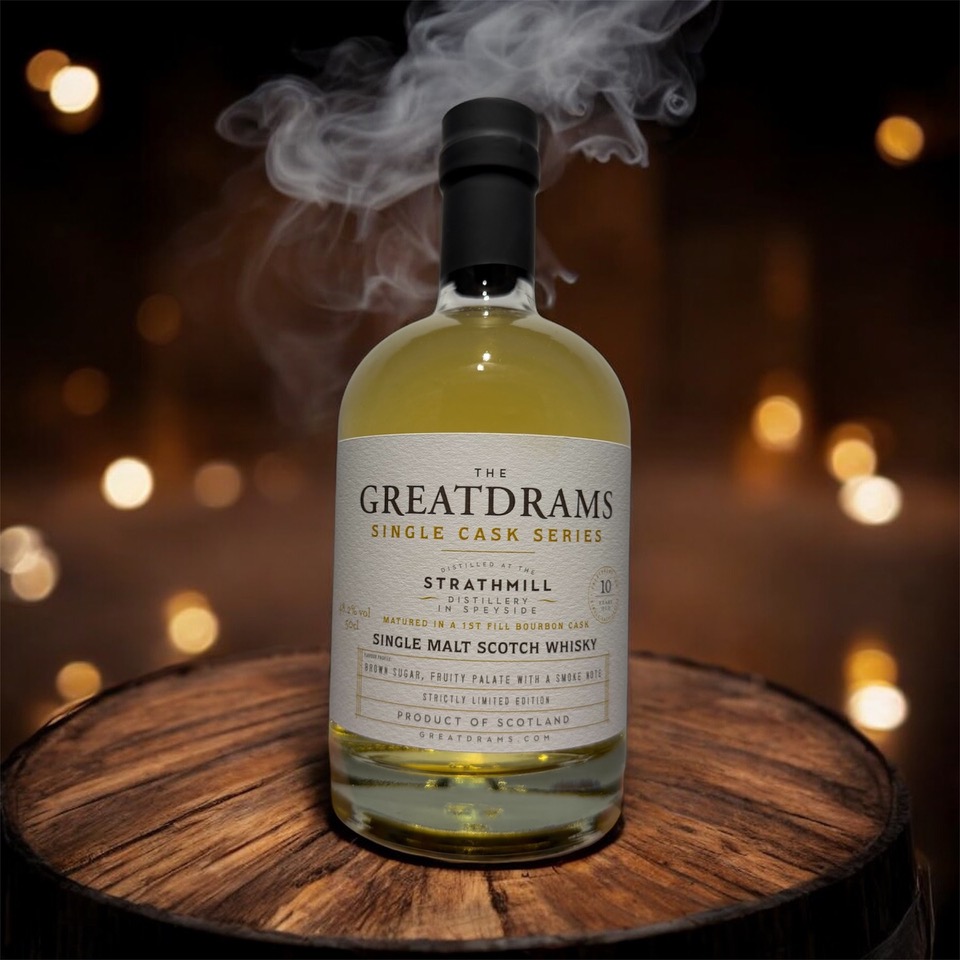Everything you need to know about Scotch
let’s begin
Everything you need to know about the world’s favourite Whisky, all in one place!
What is Scotch?
This is a pretty simple definition and I’d say most people understand it straight off the bat. But for those of us who don’t: Scotch is Whisky that has been distilled and matured in oak casks for at least three years and a day in a Scottish distillery and has been bottled at no lower than 40% ABV. And that’s it. So now we have a beginning let’s get stuck in!
brief history
Whisky is a drink with a long, long, long history in Scotland. The very name “Whisky” originates from the Gaelic “uisgebeatha”, meaning water of life and from this name a whole industry was born.
Distillation finds its roots in the making of perfumes in Persia but distillation to make Whisky in Scotland is firmly grounded in the work of monasteries.
Scottish monks in the twelfth century would distil Whisky in order to supplement their income and from there it soared.
Production continued over the centuries and grew in popularity as it became easier to do. Common folk began distilling their own Scotch and the market boomed.
Then the excise man decided to take his share, and in 1644 Scotch was first taxed at around 13p for a third of a gallon. And so began the war between smugglers and the taxman that raged for more than a century.
Despite this setback the industry continued to grow, with smugglers hiding their stills wherever they could, including underneath hills!
Then, in 1823 the Excise and Licensing Act occurred, meaning producers could make their stills legal by simply buying a licence. Unfortunately this still did not appease the distillers, and it was another year until the first licence was actually purchased.
That licence was bought by George Smith of The Glenlivet, a distillery that is still striving for success today.
From then on licences became more common and the industry grew faster. Since that time it has reached a global scale and countless international variations have sprung up everywhere.
regions
These regions represent the different part of Scotland where Scotch is made. The country is split into these regions and each region has a different flavour profile, so when you know a region of a Scotch, you can compare its own flavour profile to other Scotches of the same region. There is some dispute about how many regions there are, with Islay often being included with the Islands and Campbeltown being included in the Highland region. I’ve included them all just to cover all our bases.
This is the region that is most densely populated with distilleries, with somewhere around 42 working distilleries in total. It is situated in the north east of the country, surrounding the River Spey. This area also plays host to some of the biggest names in the Scotch industry, including Glenfiddich, The Macallan, The Glenlivet and Aberlour. It was once considered as part of the Highlands but has been made a region in its own right due to the high amount of distilleries here.
- Islay
The Isle of Islay is the island that is most densely populated with distilleries, with eight working distilleries in total. These include Ardbeg, Bowmore, Bruichladdich, Laphroaig, Lagavulin, CaolIla, and Bunnahabhain. It is situated just off the coast of Campbeltown
- Islands
Although not recognised by the Scotch Whisky Association as a region by itself but is included in the Highland region, the islands have several working and well-renowned distilleries. These include Isle of Jura, Arran, Tobermoray, Talisker, Highland Park, Scapa. The islands included in this region are Jura, Arran, Skye, Mull and Orkney.
This is the largest Scotch region and includes distilleries such as The Dalmore, Glenmorangie, Oban and Aberfeldy.
- Lowlands
Although there are currently only four working distilleries in the Lowland region, Glenkinchie, Bladnoch, Auchentoshan and Ailsa Bay, there are several more planned to open in the coming years.
- Campbeltown
Campbeltown is situated off the coast from Isaly, on the south western side of Scotland. Although it is no longer considered a region, it was once one of the most densely populated regions and claimed the title of “Whisky capital of the world”. Now it has only three working distilleries, Glen Scotia, Glengyle and Springbank.

flavour profiles of regions
- Speyside
These malts tend towards lighter, more floral flavours. However, there are a wide variety of flavours in the Speyside region, including spicy and smoky expressions as well. Typically though, they are sweet and fruity with a light mouth feel and complex character.
- Islay
Islay malts are usually heavier than Speysiders, with a distinctly more heavily peated quality. They also reflect their seaside home, with medicinal qualities and lots of salty sea breezes and brine.
- Islands
The Islands are similar to Islay, with peat and seaside flavours. Both the Islands and Islay are renowned for their peat and thick, smoky notes but the Islands usually go for a softer, subtler peated quality.
- Highlands
Similar to Speyside malts, but not as sweet. Highland malts have a light character, with a dry finish and plenty of floral notes in between. Distilleries on the Highland coast tend to have some peat and salt notes too. Again, like Speyside, these malts vary in flavour, with sweet and spicy expression on both sides of the spectrum.
- Lowlands
These malts have a light, grassy, somewhat earthy tone. They are a lot mellower than Highland malts.
- Campbeltown
Campbeltown malts are comparable to Islay malts, with doses of peat and salty sea wind. They also have a great depth of character and are quite complex and rich.
how it's made
Scotch goes through five different stages to reach the final product: Malting, Mashing, Fermentation, Distillation, Ageing.
Malting: After being soaked in water for 2-3 days, grains are then spread on a malting floor (basically an empty room) and allowed to germinate. This encourages the production of enzymes and starch that give Whisky flavour. Grains can be left to malt for anywhere between 8 and 21 days, depending on the season. In order to maintain consistency, the malting barley is turned repeatedly and during this time it is dried out. It is then transferred to a kiln, where it is dried completely. Many kilns are fired with peat that then lends its flavour to the Whisky.
Mashing: When the grains are dry they are ground in a powder called “grist” and mixed with warm water in a mash tun. Here the enzymes convert starch into sugars. The resulting product is called wort.
Fermentation: Fermentation occurs when the wort is transferred to a washback and yeast is added. This encourages the production of alcohol and makes a product called a wash.
Distillation: This is the process of heating and then cooling the liquid in order to separate the water and alcohol. Water and alcohol evaporate at different temperatures, alcohol at around 72 degrees and water at 100. Usually, this takes places in a copper pot still. Typically, Scotch is distilled twice to produce a smoother spirit. The liquid produced in distillation is known as new make spirit.
Ageing: After the spirit has been distilled it is placed in barrels to begin maturation. It is placed in oak barrels that are either charred or not. Some of these barrels have previously been used to mature other spirits such as Bourbon or Sherry. The liquid interacts with the wood and takes on many of its characteristics, giving it depth and complexity. Scotch has to be matured for at least three years and a day to be legally called Scotch.
Categories
- Single malt
This is Scotch that is distilled and matured in one distillery, in Scotland, for a minimum of three years and a day. Legally it has to be made form only barley and water and in pot stills.
- Single Grain
This is Scotch that contains more than one grain but is still distilled at a single distillery.
- Blend
This is a mix of many different single malts and grains from many different distilleries, all blended together.
- Blended Malt
This is a blend that is made of only single malts from different malt distilleries.
- Blended Grain
This is a blend that is made of only single grain from different distilleries.
Blended vs Single malt?
People tend to look down on blends due to the fact that they are made with grain and malts, which are cheaper and more efficient to use. However, these grains lend depth and complexity to the overall flavour and are important in the blending process.
Blending is done by a Master Blender who either works directly for a distillery or for a blending company, such as Compass Box. It is a hard art to master as it takes years of practice to know whether or not certain malts will work together and complement each other.
The biggest selling Scotch in the world, Johnnie Walker, is a blend, a testament to the popularity of the art. The only way to decide what your own opinion is on the matter is to go out there a grab a bottle of both to try for yourself!
Neat or Cocktail?
There is also a debate as to whether Scotch should be consumed on its own, with a dash of water or in a cocktail.
For the Scotch purists out there, nothing will do but a straight Whisky. However, industry experts often recommend adding a dash of water as it unlocks subtle flavours.
As for the cocktail option, well there are some who would say it is heresy to add anything to a Scotch, but in reality, using Scotch to spice up a drink and create an interesting concoction of complementary flavours can never be a bad thing! If you’re interested in trying your own, why not look up how to make an Old Fashioned or a Whisky Sour.













3 thoughts on “Everything you need to know about Scotch”